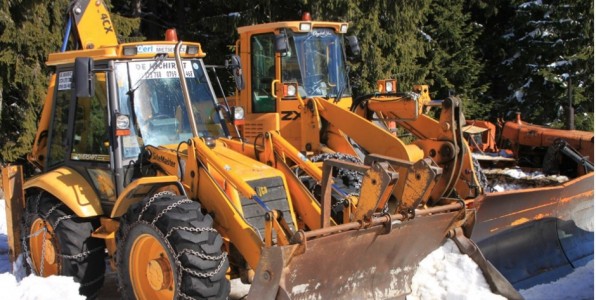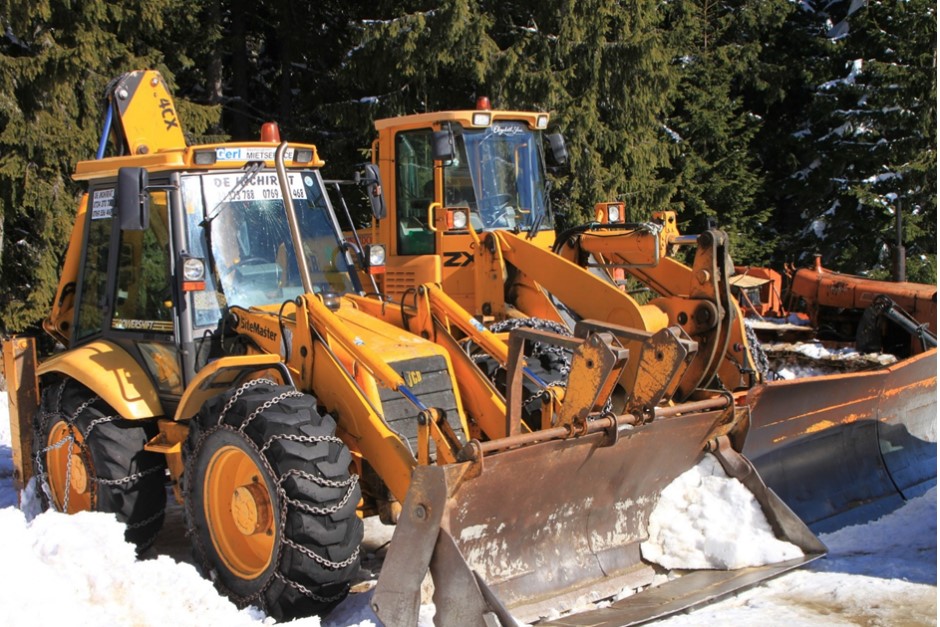5 safety considerations for your construction site in winter

5 safety considerations for your construction site in winter

Kelly Friel is a
Digital Product Manager with Zoro, a leading retailer of tools and
PPE for trade. In this blog post, she shares her insider knowledge for keeping
your construction site safe and your employees comfortable through the winter.
Construction sites can be hazardous places at the best of
times, but when the temperature plummets and ice and snow become issues, work
gets even riskier. Fortunately, it is possible to reduce this level of risk by
providing your staff with the right equipment and facilities to stay safe,
warm, and comfortable on the job.
As an employer or site manager, it’s your obligation to
provide staff with the right PPE for winter (gov.uk), and ensure
that measures are in place to help prevent slips, vehicle accidents, and cold
stress. In this article, I’ll outline the basic steps that all construction
companies should take to keep their staff safe on site during challenging
weather conditions.
Prevent falls, slips, and trips during poor weather
Preventing slips and falls on site is always a priority,
especially if your staff carry out work at height. And this is never more
important than during the winter months, when wet weather, ice and snow can
make surfaces especially slippery and treacherous.
To prevent falls in bad weather, it’s important that all
staff have work boots which provide adequate traction and grip. Rubberised mats
can also be a good collective solution for adding extra grip to slippery
concrete or scaffolding. Hand rails are also important on walkways and
scaffolding, or any other area where a fall from an open ledge is a hazard.
Remember that metal guard rails can freeze in cold temperatures, so your staff
should wear gloves to protect their skin from cold burns and improve grip.
Ensure your employees are warm
Cold conditions present acute health risks to your staff,
which is why all workers should be issued with thermal clothing during the
winter. Not only are long periods of exposure to cold weather conditions
dangerous, but during physically demanding outdoor work, it can also seriously
drain staff energy levels.
To help keep your employees warm and comfortable, you should
ensure that everyone has an insulative overcoat and trousers designed
specifically for outdoor use. It’s also a good idea to offer your staff some
accessories that will help to make their existing PPE more comfortable, like
thermal hardhat liners, balaclavas, and glove and boot liners. In extremely
cold conditions, hand warmers or heated thermal layers might be the most
effective solution.
However, it’s not just about providing the right equipment
and clothing for working hours. Employees should also have access to a
well-heated break room, which should provide a space where they can warm up and
enjoy a hot drink: not only will this help to keep everyone comfortable, but it
can have a positive effect on your staff’s mental wellbeing and motivation, too.
A static caravan or portable office fitted with seating, space heaters, and
some basic catering equipment (including a kettle and water dispenser) should be
sufficient.
Educate employees on cold stress and injury
Just as you would provide training on preventing and
treating workplace accidents or injuries, you should also educate your staff on
cold stress. ‘Cold stress’ is an umbrella term for illnesses that occur when
body temperature falls dangerously low, like frostbite, hypothermia, and trench
foot. So, before the winter chill sets
in, you should provide your staff with training on how to protect themselves, which
symptoms to look out for, and what they should do if they think they or another
member of staff is falling ill.
It’s a good idea to display signage detailing this
information in communal areas, and to ensure that training is refreshed
whenever a spell of extremely cold weather is forecast. You can learn more
about cold stress and thermal comfort at work on the HSE.
Make sure all working areas are well-lit
Shorter days and longer nights mean that sites can be dark
for much of the winter, especially if they work very early in morning or late
at night. So, you may need to increase the number of work lights you have on
site, and consider investing in a generator if electrical access is a problem.
If your site is very sprawling, mast-mounted floodlights
might be the most effective form of illumination. For work on smaller work
areas, or on jobs with more than one location, portable work lights will be a
more cost-effective solution. Don’t forget that vehicles and equipment may also
need additional mounted lighting, especially in poor visibility: this will also
help staff on foot to be aware of machinery on the move.
Don’t forget about driving and operating machinery
Extra caution is required when driving in icy conditions or
snowy weather, and this is especially true on construction sites, where roads and
tracks are often patchy, uneven, and prone to puddles and ice patches. To
further complicate matters, construction vehicles are generally less agile and
responsive than ordinary cars, which puts them at further risk of skidding and
sliding on ice.
To help keep sites clear and safe for vehicles and
equipment, a ready supply of grit is essential. This should be applied
generously to all surfaces where vehicles will be in operation whenever
temperatures drop below 2°C. Your operatives should also be given additional
training on driving heavy-duty machinery in challenging weather conditions: you
can learn more about this on Vista
Training.
Snow, ice, and wet weather can make on-site work exceptionally
dangerous, which is why it’s so important to take extra precautions during the
winter months. By implementing this advice, and providing your staff with the
right PPE and heating equipment, your staff should be able to work safely and
efficiently right through until the spring.
Comments are closed